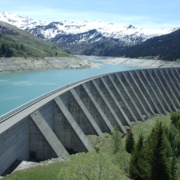Executive Summary:
Greater use of weather and hydrologic forecasts can help us manage our nation’s water resources more effectively and minimize the risk of future extreme floods and droughts. Although forecasts have become more skilled at temporal and spatial scales relevant to water management, these forecasts are often underutilized in management decisions. Based on findings from an AMS workshop in April 2018, this study analyzes how the forecasting and water resource communities could work together to improve water resource management across the US. Opportunities can be framed in terms of three main components:
-
Advances in forecasts to meet the needs of water resource managers. Notably, the potential for improved decision making is not equally distributed across water management objectives, regions, and stakeholder groups. Improvements in spatial resolution would support planning for individual watersheds and advances in subseasonal to seasonal forecasts would help with drought management. Inclusion of impacts of upstream dam regulation to increase the accuracy of forecasts for heavily regulated rivers. To provide managers with more information about the full probability distribution of possible events, probabilistic forecasts are beneficial.
-
Increased uptake and use of forecasts. Forecasts are most likely to be used when they are easily accessible, readily understood, highly skilled and relevant to management decisions. In addition, users need to have the necessary skills and information to make use of new and possibly more complex forecasts.
-
Policies to support (1) and (2). Additional resources could support forecast improvement or the use of forecasts. New incentive structures could promote greater communication and collaboration among government institutions, scientists and service providers (e.g. National Water Center) across regions and sectors. Investments in quickly evolving communications technologies can promote forecast dissemination. Training forecasters and water resource managers as well as supporting pilot studies and testbeds may ensure an efficient translation of experimental improvements into operations.
Greater collaboration among forecasters, water resource managers and policymakers would support these efforts. In addition, preparation to adaptively manage resources, roles, and responsibilities will allow us to capture the benefits of advances in future forecasts and address new challenges that emerge over time.
